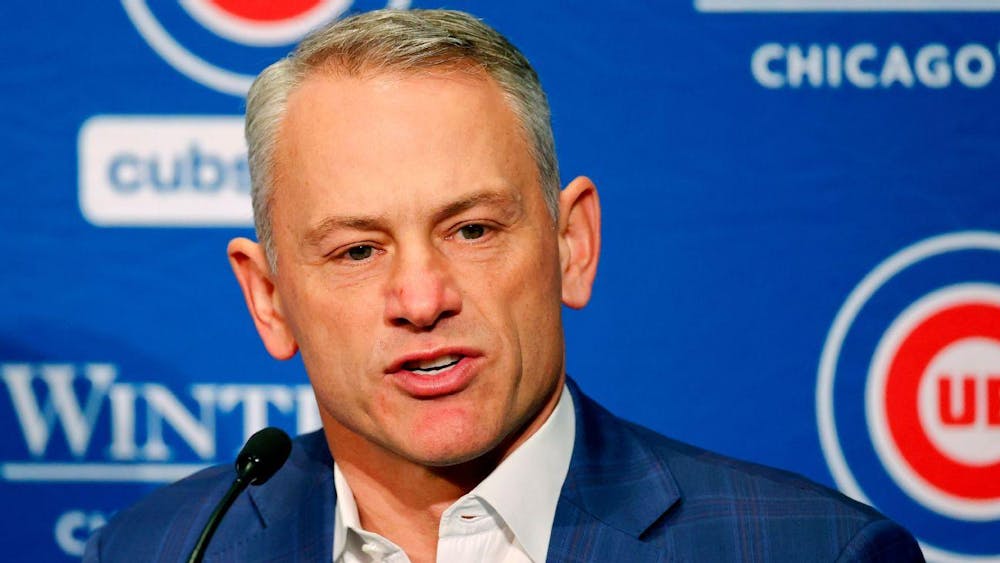CHICAGO. — Entering the 2025 Major League Baseball season, the Chicago Cubs knew they needed a frontline starting pitcher.
After a pair of 83-win seasons from 2023 to 2024, the Cubs needed to make a bold move to improve the ballclub; that move came in acquiring star outfielder Kyle Tucker from the Houston Astros in December 2024.
With the addition of Tucker, the Cubs now had the superstar they’d been looking for since the breakup of the World Series championship core in 2021. After surrendering prized prospect Cam Smith in the trade with Houston, Chicago appeared to be ‘going for it.”
However, much like the previous offseason, when the Cubs inked manager Craig Counsell to the largest managerial contract of all time, no substantial moves followed each blockbuster transaction.
In 2024, the Cubs capped a long offseason by re-signing outfielder Cody Bellinger in late February, but that was all of note. In 2025, the Cubs traded for Kyle Tucker and made their splash in free agency by signing veteran left-hander Matthew Boyd, yet left one big piece on the table.
Entering the start of spring training this year, former Houston Astros’ star third baseman Alex Bregman had yet to find a new home in a slow-moving free agency class. Despite the momentum around hyped prospect Matt Shaw bidding for the starting third base position, the Cubs found themselves “in the mix” for the three-time All-Star.
Down to the wire, Chicago remained in the bidding war for Bregman, but one major issue held up any potential deal: money. Reluctant to make a competitive offer for Bregman—Chicago refused to go beyond a short-term, opt-out deal—the Cubs failed to acquire what could have been the missing piece in a potent offense out of monetary value.
Despite the failure of the Bregman situation, the Cubs still had a glaring hole on their roster: a desperate need for starting pitching.
As spring training began, it appeared the Cubs were missing one playoff-caliber starting pitcher from completing a rotation capable of avoiding a catastrophic injury. With the stability offered by ace Justin Steele, paired with the heroics of Shota Imanaga’s rookie season, Chicago needed just a single arm to slot ahead of backend starters Jameson Taillon and the high-upside Boyd.
Instead of adding that arm in the offseason, the Cubs gambled on waiting until the July 31 trade deadline to act; however, a lot happened between early February and late July.
Less than a month into the 2025 season, Chicago lost their ace, Justin Steele, to season-ending elbow surgery on April 7, raising the need from one to two starting pitchers. Add the time spent on the injured list by Taillon and Imanaga, and it’s a miracle the Cubs are well above the .500 mark.
With the injuries to the rotation, the Cubs limped to the trade deadline in desperate need of pitching help, yet the 2025 trade deadline has come and gone, and the Cubs did very little to improve their bottom-third starting rotation—Cubs starters rank 27th in strikeouts and 16th in ERA.
Outside of adding right-hander Michael Soroka from Washington, whom the Cubs pursued in free agency the previous offseason, Chicago chose not to pay the exorbitant prices for controllable pitchers such as Soroka’s teammate, left-hander Mackenzie Gore, and Miami right-handers Edward Cabrera and Sandy Alcantara.
Without adding any notable pitching despite the absolute need, the Cubs must now rely upon the current staff, led by breakout All-Star Matthew Boyd, the continued dominance by lefty Shota Imanaga, and the return from the injured list by right-handers Jameson Taillon and Javier Assad.
Soroka joins Ben Brown and rookie Cade Horton as wild cards among Chicago’s pitchers.
Brown has struggled mightily at the Major League level (6.22 ERA), but possesses better numbers beneath the surface (4.26 FIP) and a 25% strikeout rate; Horton has a 3.42 ERA in 73 and ⅔ innings; and Soroka joins the staff with a 3.32 xERA and a 25.4% strikeout rate. In all, the trio possesses the capability to pitch impactful innings down the stretch.
Regardless of how the final two months of the season turn out, the Chicago Cubs failed to address their most significant need twice in 2025. With division rival Milwaukee surging and the rest of the National League improving, the Cubs find themselves fighting an uphill battle not just to win the National League Central Division but also to make a deep postseason run come October.

A Glimpse into the Chicago Cubs' Greatest Dilemma
Similar Posts
- — ASU Remains Undefeated In First Conference Game of the Season
- — Arizona State men’s basketball sees 11-point second-half lead vanish in loss to Oregon State
- — Subtronics hosts historic six-night residency at LA's Shrine Auditorium in celebration of his new album “Fibonacci Pt 2: Infinity”
- — The Wild West Review: Marty Supreme
- — COLUMN: Some logic behind the Cubs’ financial situation
